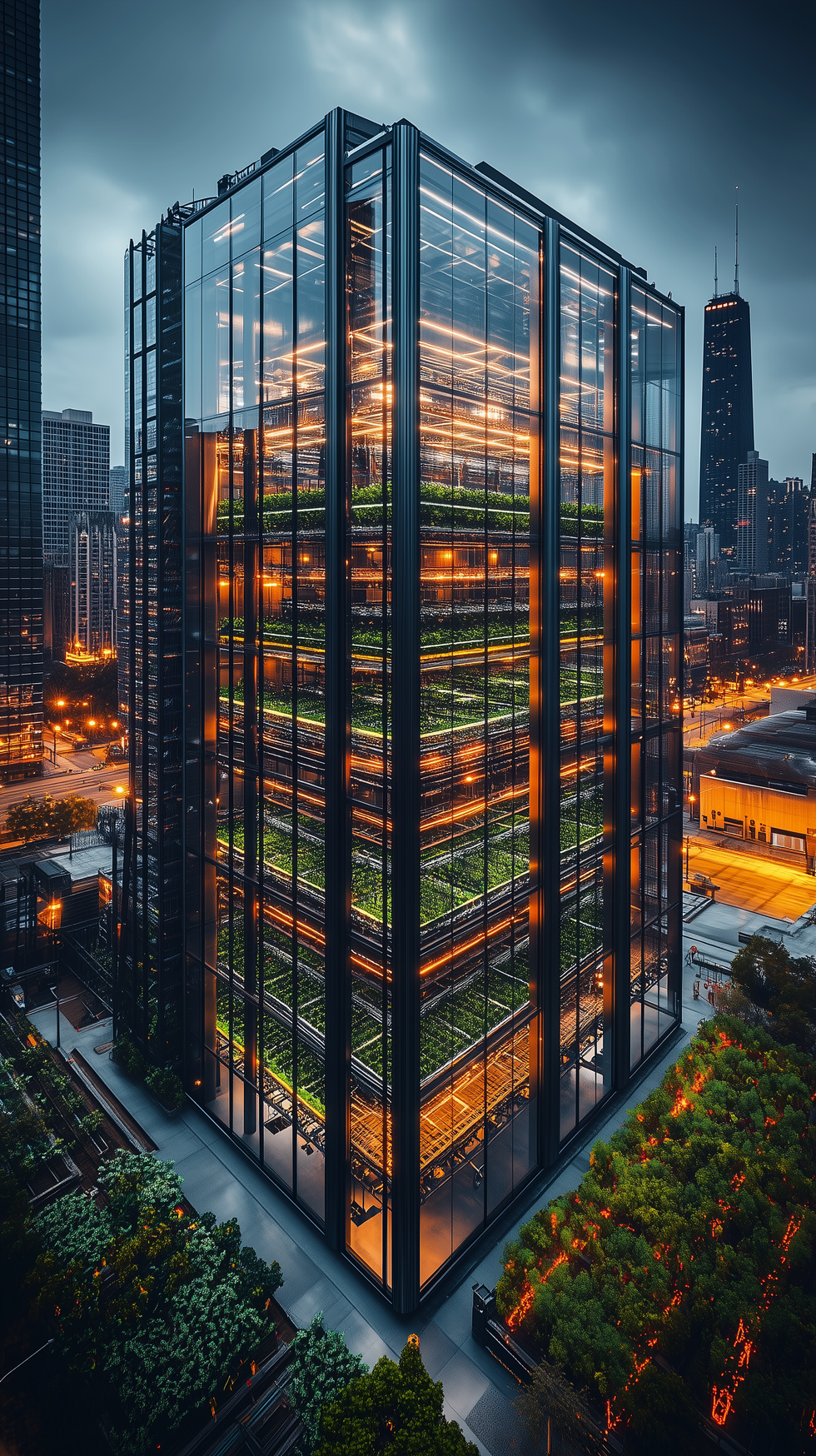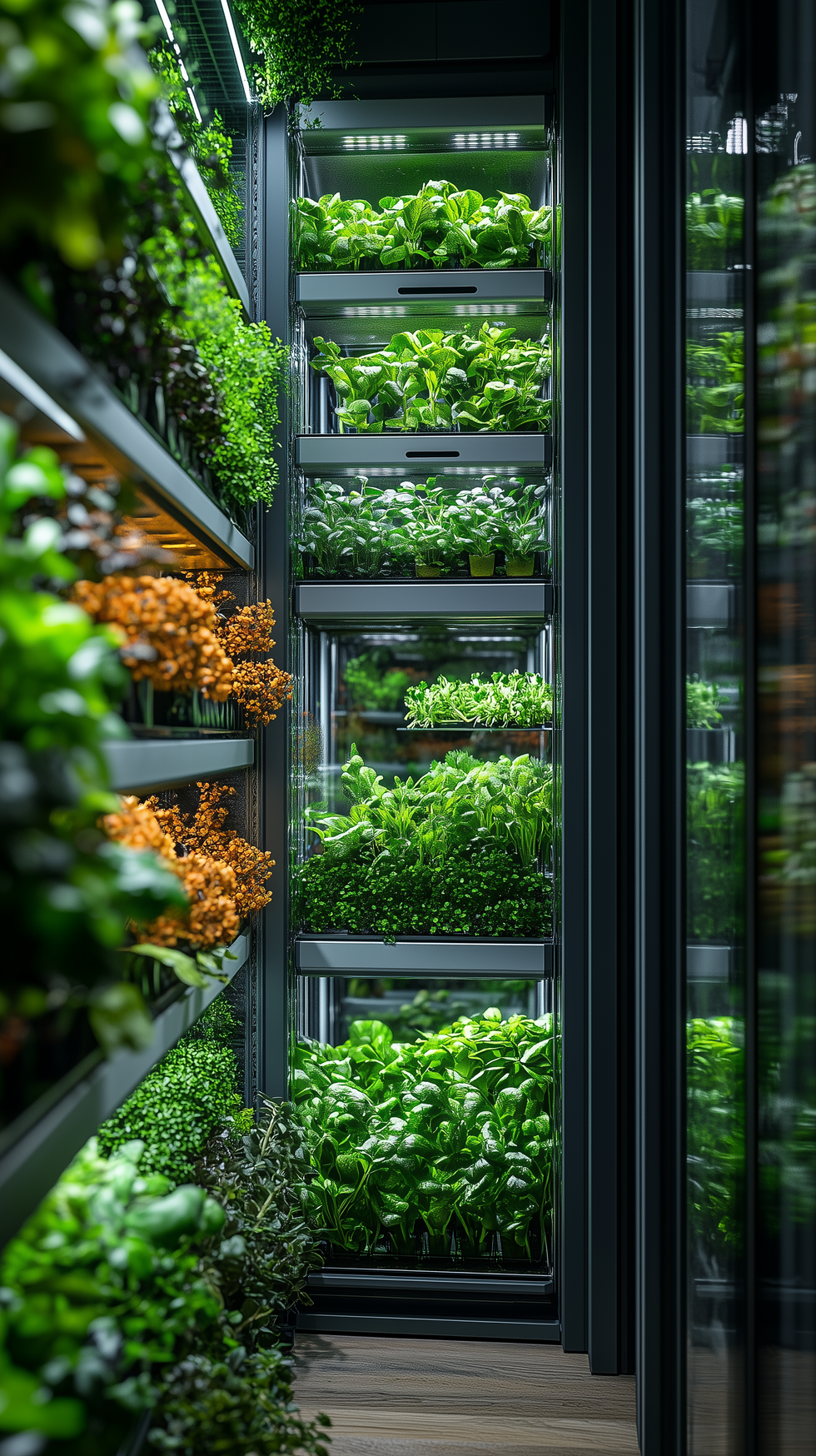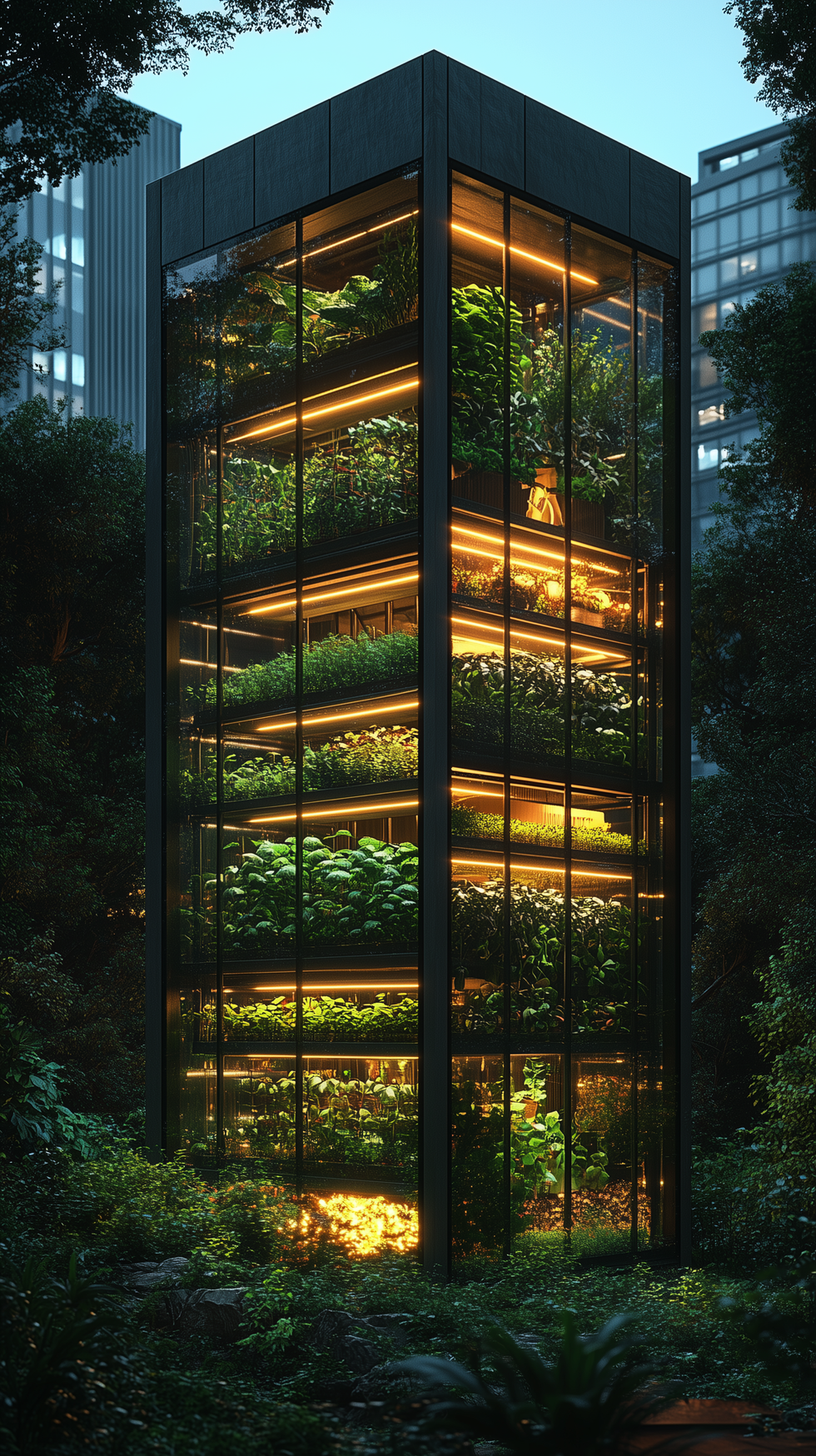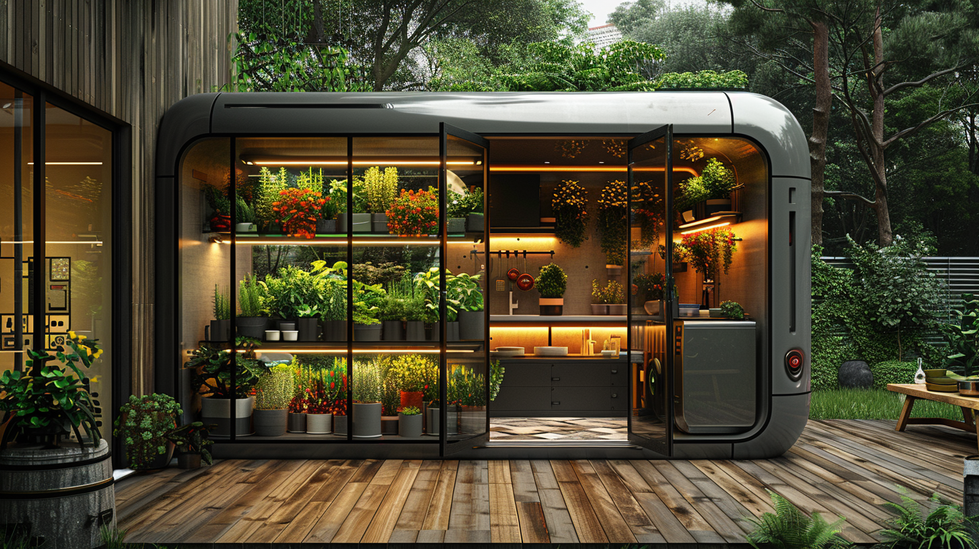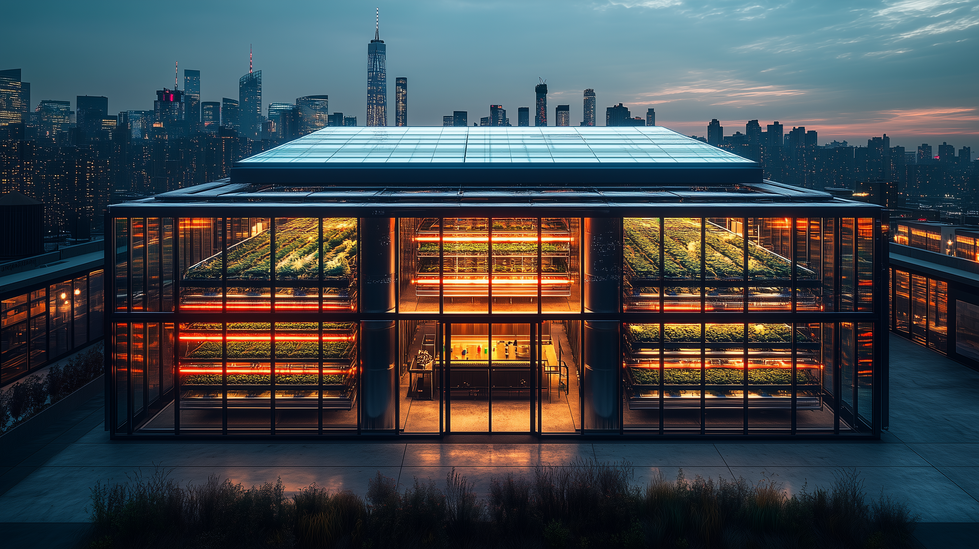Skyline Tech Group
Create Your First Project
Start adding your projects to your portfolio. Click on "Manage Projects" to get started
Greenhouse Tower – Urban Vertical Farming: Revolutionizing Food
Food Production in the Cities of the Future
1. Introduction: The Challenge of Urban Food Security
Growing global urbanization has brought immense challenges to food production and distribution. Increasingly dense and populated cities demand smart and sustainable solutions to ensure the supply of fresh, nutritious and affordable food to the population. Greenhouse Tower emerges as a disruptive response to this scenario, integrating high-efficiency vertical farming, automation and sustainable design in a single architectural system.
By combining hydroponics, aquaponics, aeroponics, artificial intelligence and renewable energy capture systems, this agricultural skyscraper not only optimizes the use of urban space, but also minimizes waste, reduces the carbon footprint and promotes a more resilient food ecosystem. This innovative approach positions Greenhouse Tower as a model for the agriculture of the future.
2. Concept: Vertical Agriculture Integrated into Urban Architecture
The Greenhouse Tower is not just a vertical greenhouse, but a multifunctional infrastructure that integrates food production, housing, and commercial spaces within the same architectural environment. Designed to operate in a self-sufficient and regenerative manner, this structure takes advantage of natural resources and artificial intelligence to optimize the production of fresh food in cities.
With a modular and scalable structure, the Greenhouse Tower can be adapted to different urban contexts, and can function as a stand-alone tower or as part of a set of interconnected buildings to form decentralized food ecosystems.
3. Technological Differentiators
The Greenhouse Tower incorporates advanced technologies to maximize production efficiency and minimize environmental impacts. Among the main differentiators, the following stand out:
3.1. High-Productivity Vertical Agriculture
The tower adopts different cultivation techniques to optimize food production in several vertical layers. Among the main methodologies employed are:
Hydroponics: Soilless cultivation, using nutrient solutions directly on the roots of the plants.
Aeroponics: A technique in which plant roots are suspended in the air and receive a nutrient-rich mist.
Aquaponics: A system that combines fish farming and plant cultivation in a symbiotic ecosystem, where fish waste serves as a natural fertilizer for the plants.
Photobioreactive Microalgae: Production of nutrient-rich algae for food supplementation and biofuels.
These methods consume up to 90% less water than conventional agriculture and eliminate the need for pesticides, making the system highly sustainable.
3.2. Automation and Artificial Intelligence in Agriculture
The cultivation inside the Greenhouse Tower is monitored and optimized by artificial intelligence, allowing precise control over temperature, humidity, lighting and nutrients. IoT (Internet of Things) sensors collect data in real time to automatically adjust environmental conditions, ensuring maximum productivity with minimum waste.
AI algorithms analyze factors such as plant growth, water consumption, and nutrient uptake efficiency, enabling automated adjustments to maximize yield and reduce overuse of agricultural inputs.
3.3. Renewable Energy and Negative Carbon Footprint
The Greenhouse Tower is designed to be energy self-sufficient, capturing natural resources and converting them into electricity and heat. Its systems include:
Photovoltaic solar panels integrated into the facades, generating electricity to power the building.
Modular wind turbines, which take advantage of wind currents from high above.
Biogas from organic waste, promoting a closed system for reusing organic matter.
Bioactive facades with photosynthetic microalgae, which convert CO₂ into oxygen and usable biomass.
These technologies allow the building to operate with a negative carbon footprint, producing more energy than it consumes and contributing to the mitigation of climate change.
3.4. Intelligent Water Collection and Reuse
The Greenhouse Tower water system was designed to minimize waste and maximize efficiency. Key solutions include:
Rainwater collection, storage and filtration for irrigation.
Water recycling systems, reducing overall consumption by up to 85%.
Desalination and air humidity purification technologies, ensuring water supply even in arid regions.
With these strategies, the Greenhouse Tower eliminates dependence on external water sources, becoming a fully closed and sustainable system.
4. Benefits of the Greenhouse Tower for the Cities of the Future
The integration of vertical agriculture into multifunctional skyscrapers radically transforms urban dynamics, providing numerous benefits for society and the environment:
Local and sustainable food production: Reduces the need for food transportation and its carbon footprint.
Less waste of water and natural resources: Closed systems allow for more efficient consumption.
Creation of local jobs and technological innovation: The agritech sector expands and creates new professional opportunities.
Reduction of the heat island effect in cities: The presence of vegetation in buildings improves air quality and the urban microclimate.
Food self-sufficiency for megacities: Decentralized cultivation improves food security and reduces the vulnerability of supply chains.
5. Real Applications and Scalability of the Project
The Greenhouse Tower can be implemented in different urban contexts, such as:
Dense metropolitan centers, where there is a shortage of space for traditional agricultural production.
Industrial and commercial zones, reducing dependence on imported fresh food.
Desert and arid regions, using air humidity purification systems.
Space colonies and extraterrestrial habitats, adapting cultivation systems to environments with scarcity of fertile soil.
In addition, the project can be replicated on a global scale, becoming an essential solution for countries facing food insecurity.
6. Conclusion: The Future of Vertical Farming and the Urban Food Revolution
The Greenhouse Tower represents an evolution in food production in urban environments, uniting technology, sustainability and architectural design to transform the cities of the future. This concept proves that it is possible to integrate agriculture, housing and technological innovation within a single, highly efficient architectural system.
Vertical farming is more than a trend – it is an urgent need to ensure food security and the resilience of cities in the face of the climate and population challenges of the 21st century. With models like the Greenhouse Tower, we can create a new era of urban food production, where cities don’t just consume resources, but become hubs of sustainable production.
This project is not just a building – it is a milestone in the transformation of global architecture and agriculture. The future of urban food starts here. 🌿🏙️

